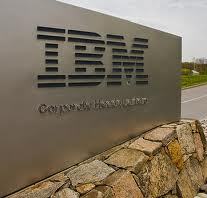 In the first quarter, I.B.M. saw a decrease in its hardware business that affected both profits and revenue. Revenue was down 5 percent, to $23.4 billion compared with the same quarter a year ago, falling below analysts’ forecast of $24.7 billion. Net income decreased 1 percent, to $3 billion. This is the first time that I.B.M.’s earnings results have fallen short of analysts’ estimates since 2005.
In the first quarter, I.B.M. saw a decrease in its hardware business that affected both profits and revenue. Revenue was down 5 percent, to $23.4 billion compared with the same quarter a year ago, falling below analysts’ forecast of $24.7 billion. Net income decreased 1 percent, to $3 billion. This is the first time that I.B.M.’s earnings results have fallen short of analysts’ estimates since 2005.
The company’s revenue growth has been modest, but the first quarter decrease exceeded any falloff that happened during the recession. In the past, the company was able to keep earnings ahead of Wall Street’s forecasts with its cost-cutting discipline and a steady shift toward higher-profit offerings. I.B.M. is now planning to take $1 billion yearly in charges to trim the payroll in the current quarter and cut costs. Most of the affected workers will be outside the United States.
I.B.M.’s results are closely watched because they are believed to be an indicator to broader trends in business technology spending. Analysts are now questioning whether the company is facing a temporary setback or whether its hardware business may be in deeper trouble. A. M. Sacconaghi, an analyst at Sanford C. Bernstein said, “This is very uncharacteristic. We’re seeing I.B.M. struggle.”
The China market, once hot, grew by “a disappointing 1 percent” in the quarter, according to Mr. Loughridge. He said that the recent change in Chinese leadership might have resulted in an investment hiatus as plans on the national and local levels are fine-tuned. I.B.M. is currently the largest supplier of information technology to corporations and government agencies worldwide.
Mr. Loughridge also talked about the hardware business. He said that the mainframe division is healthy, but parts of the hardware business are facing a longer transition. The units that sell industry-standard data center computers, typically powered by Intel chips, and larger data center computers that use I.B.M.’s Power chips are the units that are in trouble. Analysts say the problems in the hardware units could point to a structural shift as companies choose to use computing resources from remote data centers run by others instead of building their own.
